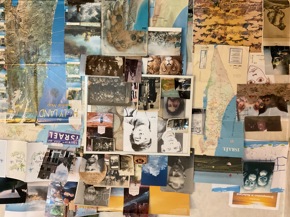35017YM18The GospelofGold: BaälMammon&SatanMoloch
Q&@
THE TRUST IN ROME'S COINS WAS SO STRONG THAT EVEN OUTSIDE THE EMPIRE'S BORDERS, PEOPLE WERE HAPPY TO RECEIVE PAYMENT IN DENARII? IN THE FIRST CENTURY AD, ROMAN COINS WERE AN ACCEPTED MEDIUM OF EXCHANGE IN & ON THE MARKETS OF INDIA, EVEN THOUGH THE CLOSEST ROMAN LEGION WAS THOUSANDS OF KILOMETRES AWAY! The INDIANS had such a strong confidence in the denarius and the image of the emperor that when local rulers struck coins of their own they closely imitated the denarius, down to the portrait of the Roman emperor! The name 'denarius' became a generic name for coins. Muslim caliphs Arabicized this name & issued 'dinars'! The dinar is still the official name of the currency in Jordan, Iraq, Serbia, Macedonia, Tunesia & also several other countries. As Lydian-style coinage was spreading from the Mediterranian to the Indian Ocean, China developed a slightly different monetary system, based on bronze coins and unmarked silver and gold ingots. Yet the two monetary systems had enough in common (especially the reliance on gold and silver) that close monetary and commercial relations were established between the Chinese zone & the Lydian zone. Muslim and European merchants and conquerors gradually spread the Lydian system and the gospel of gold to the far corners of the earth. By the late modern era the entire world was a single monetary zone, relying first on gold and silver, and later on a few trusted currencies such as a British pound & an American dollar. The appearance of a single transnational & transcultural monetary zone laid a foundation for a unification of Afro-Asia, & eventually of the entire globe, into a single economic & political sphere. People continued to speak mutually incomprehensible languages, obey different rulers & worship distinct gods, but all believed in gold & silver & in gold & silver coins. Without this shared belief, global trading networks would have been virtually impossible. The gold & silver that 16th-century conquistadors found in America enabled European merchants to buy silk, porcelain & spices in East Asia, thereby moving the wheels of economic growth in both Europe & East Asia. Most of the gold & silver mined in Mexico & the Andes slipped through Euro-pean fingers to find a welcome home in the purses of Chinese silk & porcelain manufacturers! What would have happened to the global economy if the Chinese hadn't suffered from the same 'disease of the heart' that afflicted Cortés & his companions - & had refused to accept payment in gold & silver?
03 jul 2019 - bewerkt op 06 jul 2019
- meld ongepast verhaal
Log in om een reactie te plaatsen.
- O 02 jan 2025 48510 169 De meedogenloze Slager van Bagdad had al
- O 02 jan 2025 48509 168 Die Ongrijpbare Vrede: Het Eerste Jaar
- O 02 jan 2025 48508 Jonge helden, oude heren, moeders & kinderen
- O 01 jan 2025 48507 Want dàn zùllen hier nu meer wrede aanslagen
- O 01 jan 2025 48506164 Eerlijk gezegd vraag ik me al 60 jaar af
- O 31 dec 2024 48505Premier Yitzchak Shamirs Likoed-partij stelde
- O 31 dec 2024 48504163De PLO Verwierp Het Plan At First Instant?
- O 31 dec 2024 48503 Israëlische Kolonisten haalden regelmatig ‘t
- O 31 dec 2024 48502 162 De ‘Gewapende Strijd’ Ging In 1989 Dóór
- O 31 dec 2024 48501161Tegen de Koeweitse krant al-ANBA verklaart
- O 30 dec 2024 48500160 DIT betekende vlg. Arafat……
- O 30 dec 2024 48499Vertegenwoordigers van de ‘Filistijnse Staat’
- O 30 dec 2024 48498159Vrede Zus Vrede Zo terwijl de verkiezings-
- O 30 dec 2024 48497158 We hadden duidelijk zicht op die regel-
- O 30 dec 2024 48496 In de weken na de dood van Wazir verminderde
